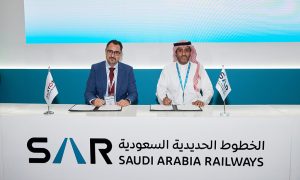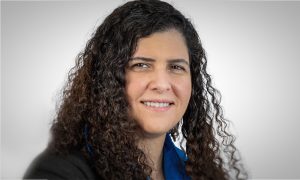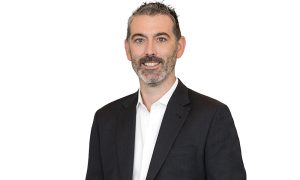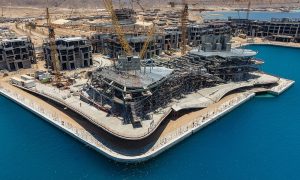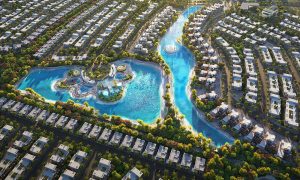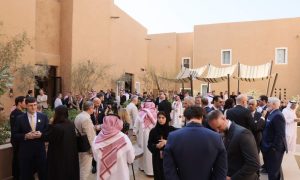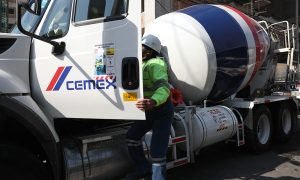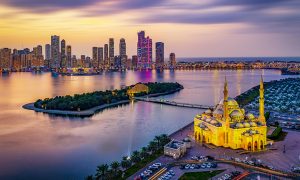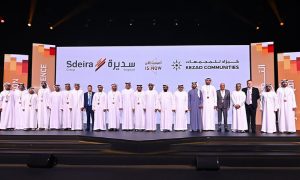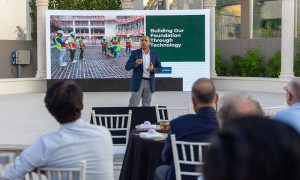How is TRSDC breaking new ground in conservation?
A recent scientific study highlights opportunity for the high-end tourism industry to support better conservation outcomes, supported by on-the-ground approach to marine design and development

The Red Sea Project is centered around the development of a large, nearly pristine coastal area which extends along Saudi Arabia’s west coast. The area totals 28,000 km2 of which 8,008 km2 are islands and marine ecosystems. This development comes with a commitment to protect the natural environment of the lagoon and reef habitats, increase the abundance of corals, and minimize stresses such as pollution, noise, and others that often broadly impact the marine ecosystems.
Future tourists will likely make the trip to experience the healthy and unspoiled destination, to swim over colorful gardens of coral amongst shoals of fish. But even if they choose not to snorkel or dive close to a reef, their ideal tropical beach vacation is most likely made possible by coral reefs. The tourism industry depends on this valuable natural treasure, but recently, the roles have reversed, and coral reefs located at such tourist destinations now depend heavily on the growing movement towards a sustainable tourism industry.
Al Wajh lagoon, located on the northeastern part of the Red Sea, includes coral reefs of different configurations, mangrove forests and seagrass meadows. In many parts of the lagoon, you can dive into vibrant coral reefs with abundant live corals, covering from 30% to 90% or more of the seabed. It is believed that corals in the northern Red Sea are particularly resistant to warming conditions, that have damaged coral reefs in many other parts of the world in recent years. Therefore, the risk for corals to suffer negative impact as a result of climate change in this region is lower than in most other coral reef areas elsewhere in the world.
Coral reefs in The Red Sea Project area represent some of the healthiest and most extensive coral reefs inside the Red Sea and around the globe. For The Red Sea Development Company (TRSDC), a commitment to sustainability is not enough; the organisation has pledged to conserve and actively enhance these areas and is targeting an increase in net conservation value of 30% over the next two decades. Achieving those conservation outcomes requires a management model far superior to a “business as usual” scenario.
At the site, 58% of the marine area is committed for conservation and of the remaining 42%, the majority is deep lagoon habitat which will also not be developed. In fact, development is planned for only 5% of the lagoon area and will include a variety of infrastructure and assets such as overwater villas, hotels, residences, bridges, marines, and a golf course to be built along the lagoon and its surrounding areas. Even though development is taking place in the dedicated 5% of the coastal area, all of the proposed activity is under the constant scrutiny of a wide team of experts in the field of marine construction, scientists and academics, and global environmentalists, and is subject to stringent environmental guidelines.
For instance, TRSDC partnered with Archirodon, a global leader in marine infrastructure projects, who commenced operations onsite in August 2019.
Archirodon is responsible for the building of enabling marine works which will provide appropriate access to some of the more remote islands in the archipelago of more than 90 islands, in the form of jetties and causeways. Their scope of work includes the construction of a 3.3 km crossing to Shurayrah, the main hub island and part of the first phase of development at The Red Sea Project. The development also includes two coastal and a further four island jetties. Given the nature of the site, and without these enabling marine infrastructure, the contractors and developers would not be able to move the prefabricated and modular eco-resorts to the islands. What’s intriguing is that TRSDC’s partnership with Archirodon, goes beyond the industry standard to develop enabling marine works.
“We are working closely with TRSDC to relocate and transplant corals. We have relocated around 500 crates of corals that were in close proximity to Sheybarah’s jetty. We have a team of divers at site and we are bringing more divers on board to relocate some of the corals that are around the coastal areas where we are building our jetties and causeways,” said Karol Pieniazek, Project Director at Archirodon.
Relocating these corals is a serious commitment. A huge amount of corals is being moved away from the construction areas into temporary close by holding areas. The next stage will be to reattach them onto new artificial reefs.
“TRSDC is currently developing plans for increasing coral reef habitats within the development areas, which includes the creation of multiple coral nurseries to rear and grow corals. We are working with the experts at King Abdullah University of Science and Technology (KAUST) who have vast knowledge and the research capabilities needed, as well as other business partners who can provide expertise in industrial scale coral gardening,” said Ahab Downer, Environmental Operations Executive Director at TRSDC.
To ensure compliance with the Environment and Social Impact Assessment (ESIA) completed, Archirodon has installed real-time monitoring buoys allowing the measurements of temperature, salinity, and suspended solids present in the waters surrounding the development work. Primarily, Archirodon measures the suspended solids (2mg/l above the baseline level) and if this figure is exceeded, the work stops in order to take all necessary actions to resolve the issue prior to work continuing.
The marine works at site have had no stops to date and TRSDC, in conjunction with Archirodon, continue to improve the way works are being undertaken. TRSDC and partners are working in an extremely sensitive ecological environment with coral, turtle nesting, and bird nesting and as a result, no nighttime working is permitted. This helps in reducing disturbance from noise above and below water, and ensures no lights impact the nocturnal activity of turtles and other megafauna. Additionally, night sailing in the lagoon is heavily regulated to avoid collision with megafauna.
While Archirodon relocates corals around the Sheybarah’s jetty, where they are also constructing a 1.4km causeway to permit access to the island from the jetty, the KAUST team is planning to build an artificial reef at this island. It will be built underneath 38 overwater villas, designed by Killa Design, one of the region’s leading architectural design firms. The firm is dedicated to creating innovative and sustainable buildings and the design of the villas is inspired by the natural surroundings, particularly the corals in their purest form which is the circle. The circle represents unity, integration, and wholeness, giving guests a sense of completion, confidence, and harmony. These coral inspired villas emerging on the surface of the water will be made of a polished steel which will reflect the water, the sky, and the best part of the project itself – the reef below.
“Tourists will come to this island not only because of its ultra-luxury design but to feel and engage with the natural environment of this resort. We have an advantage here in the sense that people can truly experience the wonders beneath the water. This destination will be one of the top diving spots in the world, it just naturally has that potential,” said Shaun Killa, Design Partner at Killa Design.
TRSDC and KAUST recently published a research paper in Frontiers in Marine Science journal which sheds light on how careful design and planning can allow coastal development to enhance rather than jeopardise conservation efforts.
Coastal development and marine conservation have traditionally been opposing concepts, given that coastal development typically alters ecosystems and reduces the extent of habitats. TRSDC is committed to its environment and sustainability goals to protect and enhance the pristine nature of the red sea islands and shoreline, and as stated in the study: “The conservation of 58% of the marine area at The Red Sea Project, with the development footprint being 5% of the total area, hence achieving a conservation to development ratio of 10:1, is unprecedented in any documented coastal development plan”.
